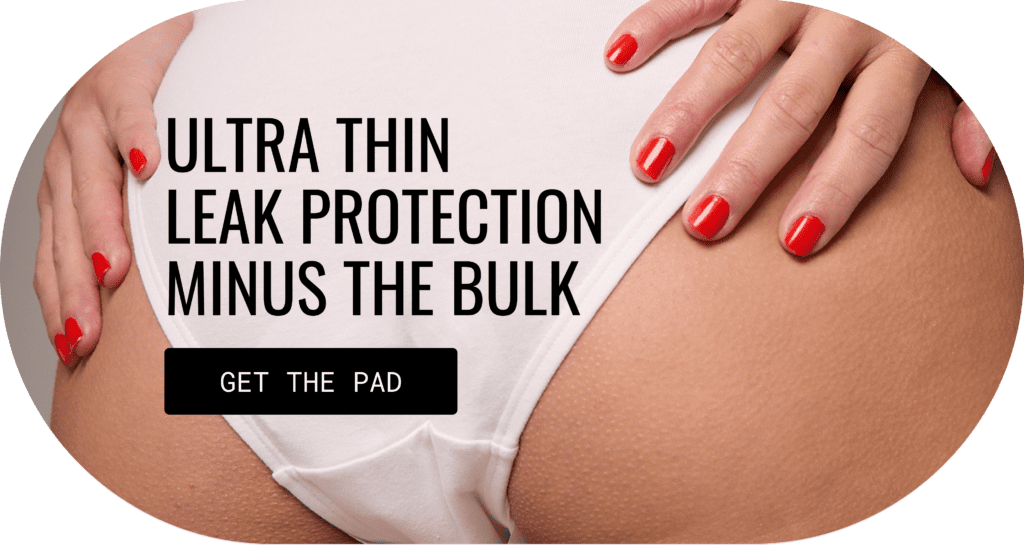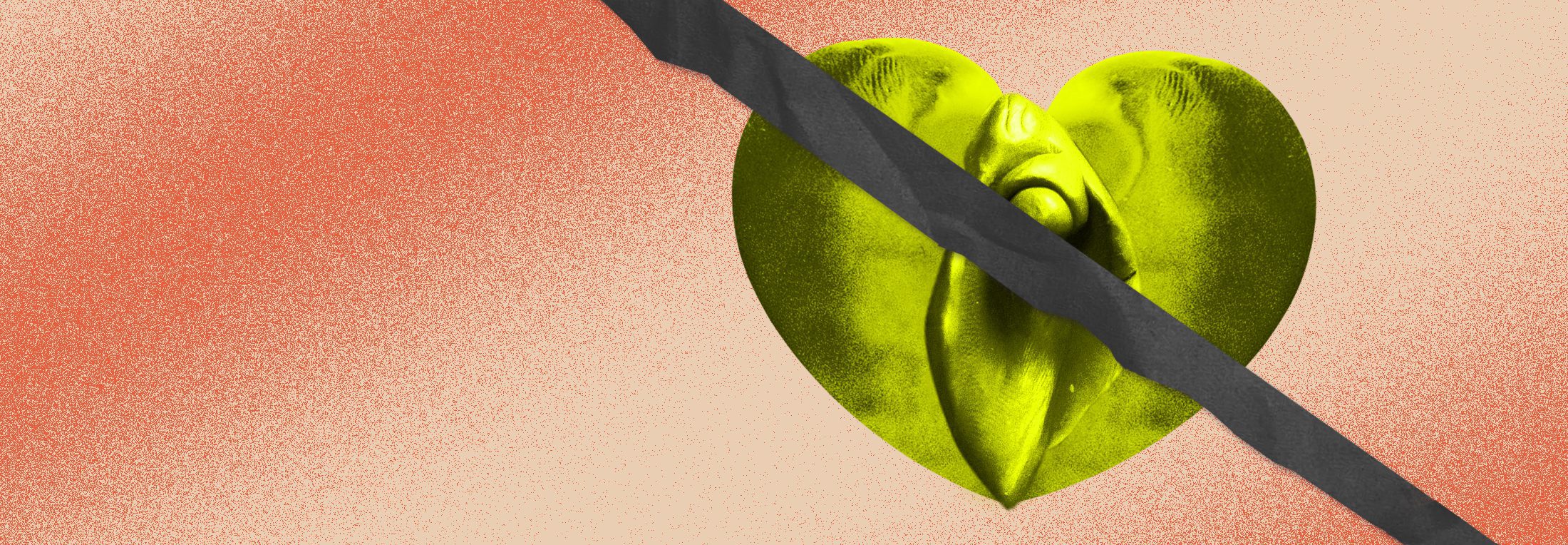What the Sex and the City episode got wrong about this painful condition
It’s the HBO series we love to hate on but also secretly love: If you’re a part of the millennial generation or maybe even on the younger cusp of Gen X, you probably binged all six seasons of Sex and the City at one point in your teens or twenties.
Plenty of moments in the show didn’t age well (Case in point? The overwhelming lack of diversity, Carrie and Big’s toxic relationship, the list goes on…). But considering it originally aired in 1998, SATC did manage to teach us some pretty forward-thinking lessons about friendship, relationships, and navigating a career as a young adult in a big city.
However: There’s one episode we absolutely have to call out. You might remember it as the one where Charlotte goes to the OB/GYN for vulvar pain and leaves with a prescription for antidepressants in hand. She’s told that her “vagina is DePResSed” 🥴 —but what she really has is a diagnosis of vulvodynia, a painful and frustrating condition that affects as many as 16% of people with vulvas.1
Today, we’re debunking the vulvodynia misinformation that came out of that infamous episode. We talked with Nikki Winn of @vestibulodynia about her own experience with the condition and her advice for those dealing with pelvic pain. Here’s everything you need to know about vulvodynia, including its suspected causes, common symptoms, and treatment options.
What is vulvodynia, really?
According to the American College of Obstetricians and Gynecologists, “Vulvar pain can be caused by a specific disorder or it can be idiopathic. Idiopathic vulvar pain is classified as vulvodynia.”2
In other words, vulvodynia is simply the term used to describe pain in the region of the vulva that doesn’t have an apparent or identifiable cause (that’s what “idiopathic” refers to).
There are several subtypes of vulvodynia, typically grouped into categories as follows:3
1. Localized vulvodynia:
Vestibulodynia
Sometimes known as vulvar vestibulitis syndrome (VVS), which refers to pain that is limited to the vulvar vestibule (the entrance or opening of your vagina).
- Provoked vestibulodynia (PVD), is characterized by pain that occurs during or after pressure is applied to the vestibule, e.g., with sexual intercourse, tampon insertion, a gynecologic examination, prolonged sitting, and/or wearing fitted pants.
- Primary PVD, which applies to individuals who have experienced vestibular pain since the first attempt at vaginal penetration.
- Secondary PVD, which applies to individuals who have experienced pain-free sexual intercourse, but then went on to have vulvar pain.
- Clitorodynia, if you ever wondered, “why does my clit hurt?” you may be experiencing Clitorodynia. This refers to clitoral or pain in the clitoris (clitoral hood, crura, glans clitoris).
2. Generalized vulvodynia (GV)
Characterized by pain that is more or less constant (can be burning, throbbing or generalized pain, see below). This pain may be felt in a specific part or area of your vulva (e.g., only in the left labia or near the clitoris) or in multiple areas. Pain may also occur in the perineum and inner thighs.
As Nikki, who has vestibulodynia, explains, “Vulvodynia is the umbrella term for pain of the entire vulva (minora or majora). It’s like saying you have arm pain in the sense that it says you have pain but doesn’t say why or what kind. Vestibulodynia is a more specific kind of vulvodynia that means pain of the vestibule (a.k.a. the tissue at the entrance of the vagina). Finding your specific type of vulvodynia is vital to finding healing, since it changes your treatment plan.”

Vulvodynia symptoms and signs
As explained above, the number one symptom of vulvodynia is pain. However, that pain can express itself in different ways, and in different areas of the vulva, depending on many factors. Here are just some of the ways vulvodynia pain manifests:
- Burning or itching
- Soreness
- Throbbing
- Stinging or rawness
- Pain during sex (dyspareunia)
For some, vulvar pain starts very early on, either during puberty or shortly thereafter. For others, vulvodynia can appear seemingly at random, during any phase of adulthood. One study found that the average age of onset is 30, “with pain onset reported as young as age 6.”4
There does seem to be some correlation between vulvodynia onset and first tampon use or first instance of penetrative sex. The same study found that “41.7% of women with vulvodynia reported pain with first intercourse, and 23.3% reported pain with first tampon use.”
We asked Nikki when she first became aware of her vestibulodynia. Here’s what she told us:
My first symptom started when I was just 13 and had my first period. I remember my mom and sister teaching me how to use a tampon and all of us thinking I didn’t put it in right because I was so uncomfortable. When I tried taking the tampon out, it was excruciatingly painful! I went on to use pads and figured tampons just ‘weren’t for me.’
It wasn’t until I became sexually active that I realized something was seriously wrong. Not only was sex itself painful, but I would experience terrible cramping and nerve pain after. It would get so bad that my friends and/or boyfriend at the time would rush me to ER. The ER doctors never knew what to do with me, which was very discouraging.
They referred me to the hospital’s Gynecologist and from there I went on a long journey, bouncing from doctor to doctor, until I got properly diagnosed.
It took me around four years of medications and different lifestyle changes before a doctor properly found the cause of mine: I was born with three times too many nerves in the entrance of my vagina. This made any contact with the area feel like a searing, hot burn (and, ahem, not at all sexy).

When to see a doctor about vulvar pain
The symptoms of vulvodynia are quite variable. For many, it is difficult to accurately describe their symptoms, making the road to a diagnosis, long and winding. It is important thing to keep in mind is that any pain in the vulvar region should not be ignored. Pain, in general, is not something to brush aside!
Studies have found that vulvodynia patients self-report chronic yeast infections or urinary tract infections more often than the general population. This suggests that vulvodynia could be linked to these conditions.5
If you have recurring yeast infections or UTIs but also experience chronic vulvar pain, ask your health care professional about vulvodynia. And, of course, get in touch with a provider if you’re experiencing any of the symptoms listed above.
There is one Sex and the City “Depressed Vagina” episode takeaway that we can actually get behind. We are talking about the “vagina journal” that Charlotte is told to keep.
With any type of chronic pain condition, it can actually be super helpful to record your daily symptoms on paper (i.e. Monday: Got my period, tried to insert a tampon, felt an intense sharp pain in vaginal area – 8 out of 10 – decided to wear period underwear instead). Do this for a few weeks at a time, and then bring your journal to your next appointment. This way you can easily refer back to specific instances and monitor your pain levels over time.
What should you expect when you first see a doctor?
Your provider will likely do a pelvic exam and may recommend STD and Sexually Transmitted Infections (STIs) testing. Further, on examination, your health care provider may gently touch different areas of the vulva with a cotton swab. This cotton swab test can help determine if there is pain.
They can also recommend ultrasounds, bloodwork, or a CT scan to rule out other potential causes. Depending on your symptoms and the amount of time you’ve had them, your gynecologist may also perform a biopsy as some skin conditions, lichen sclerosis, for example, need to diagnosed by looking at the vulvar or vaginal skin under a microscope.
Contributing factors and possible causes of vulvodynia
There are multiple potential causes for vulvodynia. What triggers one person’s case could be an entirely different set of factors than what triggers it for another.
“There is no finite ‘cause’ for vulvodynia,” Nikki explains. “Some women have a hormonal imbalance, some have tight pelvic floor muscles, some could experience pain due to trauma, and others (like me) have an underlying nerve problem.”
According to the National Vulvodynia Association, any one or more of the following factors could contribute to vulvodynia: 1
- Injury or irritation of the nerves that control sensation in the vulva
- An abnormal response of vulvar cells to infection or trauma
- Genetic abnormalities that make cells overreact to inflammation
- A localized hypersensitivity to Candida (yeast)
- Weakness or spasm in the muscles of the pelvic floor (pelvic floor dysfunction)
This is by no means an exhaustive list. A 2005 study states that potential causes could include “Embryologic abnormalities, increased urinary oxalates, genetic or immune factors, hormonal factors, inflammation, infection, and neuropathic changes.” Importantly, they add, “Most likely, there is not a single cause.”6
Interestingly, chronic yeast infections, chronic UTIs, fibromyalgia, and irritable bowel syndrome have also been associated with vulvodynia. In one piece of literature, researchers note that up to 30% of study participants self-reported chronic yeast infections. They suspected this to be the “cause” of vulvodynia. Moreover, “age-adjusted odds ratios indicated that fibromyalgia and irritable bowel syndrome were significantly associated with vulvodynia.”5
At this time, however, the relationship between vulvodynia and these other conditions remains unclear.
How is vulvar pain diagnosed?
Vulvar pain is diagnosed through a combination of medical history, physical examination, and ruling out other possible causes. A healthcare provider will ask about symptoms, perform a pelvic exam, and may recommend additional tests such as cultures or biopsies to determine the cause of vulvar pain.

Vulvodynia treatment options: How do you treat vulvar pain?
Charlotte’s experience in Sex in the City may have given the impression that some types of antidepressants are the only way to treat vulvodynia. In reality, there are dozens of potential treatment modalities, and there is no one treatment plan will work for everyone.
In The Vulvodynia Guideline, researchers call out the fact that “Improvement in pain may take weeks to months. […] No single treatment is successful in all women. Concurrent emotional and psychological support can be invaluable.”6
Here are a few of the more popular vulvodynia treatments discussed in the literature:7 8 9
- Topical medication such as hormone creams (estradiol, testosterone)
- Local topical anesthetics, such as lidocaine ointment, for temporary pain relief
- Medications including steroids, tricyclic antidepressants, antihistamines, or anticonvulsants
- Biofeedback therapy
- Psychological/psychiatric support, counseling, and/or trauma therapy
- Pelvic floor physical therapy (PFPT)
- Erchonia cold laser therapy
- Surgery to remove the painful tissue, such as vestibulectomy. This procedure may be effective in treating certain localized cases of vulvodynia or vestibulodynia
- Botox injections into the pelvic floor muscles
- Nerve block or steroid injections (such as EXPAREL®)
In Nikki’s case, it was a combination of surgery, pelvic floor physical therapy, Botox injections (yes, you read that right!), and medication for a multidisciplinary approach that eventually allowed her to live a pain-free life:
I needed surgery on my vagina called a vestibulectomy. They essentially remove the tissue that forms the entrance of the vagina, called the vestibule. Fun Fact: This tissue is only in one other area of the body: the belly button! Ever since I was little, I could never push my own belly button because it was incredibly uncomfortable and felt somehow connected to my vagina.
I was terrified but I was so desperate for a chance at a normal, pain-free life that I signed up. The six week recovery was not for the faint of heart but I had my mom taking care of me and a great doctor checking up on me. I healed slower than most and, at my 12-week check-up, I still had a ton of pain. I thought my surgery failed.
I went into a deep depression thinking that I would never have children, a partner, or a pain-free life. After five months of healing physically and mentally, I felt ready to seek out a second opinion. I flew across the country to another doctor and he took one look at me and said, ‘You know your surgery didn’t fail, right? You just have really tight muscles from being in pain all these years.’
He performed Botox injections in my pelvic floor muscles and I did intensive physical therapy for the weeks following. Almost 10 weeks later, I was completely pain-free and having pain-free sex for the first time in my life.
It’s important to mention that the treatment options Nikki underwent aren’t necessarily the right treatment options for everyone. What works for you will ultimately be determined by the factors influencing your own, unique case of vulvodynia. Your medical history and your symptoms will also have an important role.

Lifestyle and home remedies to relieve vulvar pain
To help manage vulvodynia symptoms, you can try applying cold compresses or cool gel packs to the external genital area. Soaking in a sitz bath two to three times a day as part of your vulvar care can also help. The bath should be lukewarm and filled with Epsom salts or colloidal oatmeal.
Wearing unbleached, cotton underwear instead of tight-fitting clothing, and sleeping without underwear at night can also help with symptoms. Skip hot tubs and hot baths, as they can cause irritation.
It is not recommended to use deodorant tampons or any type of pad as these can cause irritation and exacerbate pain among other adverse effects. If you cannot use any menstrual product other than a pad, consider switching to 100 percent cotton pads. Additionally, avoid activities that put pressure on your vulva, like biking or horseback riding.
If you can, take a bath or shower soon after heavy exercise, to remove sweat from the area, which can exacerbate, especially if in tight gym clothing. When washing, use plain water and a gentle touch; scrubbing harshly or too often can worsen the irritation. Afterward, apply a preservative-free emollient such as petroleum jelly to create a barrier. For sexual intercourse, use a lubricant with no alcohol, flavor, or warming/cooling agents. Gentle care of the vulva is the first step in your treatment of vulvodynia.
Vulvodynia and period products
For folks with vulvodynia, periods can be a literal pain. This is because traditional period products like tampons are often too painful to use—but pads are hardly a convenient long-term solution, either (especially when activities like swimming are involved).
We asked Nikki about her go-to period products for vulvodynia. Here’s what she told us:
I still prefer pads over tampons, but I was recently diagnosed with Lichen Sclerosis, which is a skin condition that impacts the outer labia. I have it totally under control and it won’t progress any further (yay!) but I’ve heard that pads can cause irritation, so I have been looking to switch over to a menstrual disc. I’ve heard a lot of women use period underwear, as well.
I struggled mostly during my period when I wanted to wear a bathing suit or go swimming, since I couldn’t use a tampon! For me, anything entering the entrance of the vagina was unbearable (and would leave me in pain for weeks after). I think a menstrual disc would be best for people who have generalized vulvar pain, rather than issues with the entrance or muscular issues internally.
Any product that is inserted into the vagina—and this includes tampons, menstrual cups, and menstrual discs—can cause pain for individuals with vulvodynia, but it all depends on the location of that person’s vulvodynia.
Those with external pain may have better luck with menstrual discs, like Flex Disc, than with tampons or menstrual cups. This is because menstrual discs sit higher up in the vaginal canal in the vaginal fornix, where there are fewer nerve endings. As a bonus, tampon strings can aggravate vulvodynia pain, menstrual discs are string-free.

If you have vulvodynia and you’re struggling to find a period product that works for you, talk to your healthcare provider. They can point you to other options for managing your period. For some, hormonal contraceptives can help make periods lighter, shorter, or generally more manageable.
Vulvodynia resources & key takeaways
So, that Sex and the City episode perhaps is not such a realistic depiction of what vulvodynia is really like. But we’re happy that, if nothing else, pelvic pain conditions are getting some attention in the mainstream media.
Vulvodynia affects upwards of 14 million people at any given time. It’s way more than just a “depressed vagina”—the condition can make intimacy unenjoyable or even outright impossible, periods more painful, and activities like excercising or just sitting at a desk, excruciating. And because so little is still known about what causes vulvodynia, it’s hard to know how to treat or prevent it.
“The reality is, most women who experience vulvar pain or pain with sex will go to the doctor and not get properly diagnosed for months or maybe even years,” Nikki tells us.
“In addition, the treatment methods are trial-and-error based. Nothing really worked for me until I got my surgery! Physical and mental therapy were very important. Finding a good doctor is HUGE and using online communities can help to find the right practitioner in your area.”
The key is, even though you may be seeing a board-certified gynecologist, not all OB/GYNs receive the necessary training in their residency to diagnose and treat complex vulvodynia. If you feel that you haven’t been heard or listened to, or if you’ve tried therapies that haven’t been effective, seek out a specialist: Dr. Jane van Dis, Medical Advisor for Flex®, recommends that you refer to the NVA’s provider list in order to find a practitioner who has the expertise.
Even if it means traveling out of town to see an expert, in the long run, it will save you time, money, frustration, and persistent pain if you aren’t getting the expert care you deserve.
Already have a vulvodynia diagnosis?
Here are some resources Nikki recommends (be sure to follow her on Instagram @vestibulodynia!):
- When Sex Hurts: A Woman’s Guide to Banishing Sexual Pain by Andrew Goldstein, MD
- The Vagina Bible by Dr. Jennifer Gunter
- The National Vulvodynia Association
- The International Society for the Study of Vulvovaginal Diseases
- r/vulvodynia on Reddit
- Facebook groups including Vulvodynia Support, Vestibulectomy Surgery Support
This article is informational only and is not offered as medical advice. It does not substitute a consultation with your physician. Please consult your physician if you have any gynecological/medical concerns or conditions.
© 2025 The Flex Company. All Rights Reserved.
- The National Vulvodynia Association. (2021). Vulvodynia: Get the facts. https://www.nva.org/media-center/[↩][↩]
- American College of Obstetricians and Gynecologists. (2016, September). Persistent vulvar pain. https://www.acog.org/clinical/clinical-guidance/committee-opinion/articles/2016/09/persistent-vulvar-pain[↩]
- The National Vulvodynia Association. (2021). Definition and types of vulvodynia. https://www.nva.org/learnpatient/definition-and-types-of-vulvodynia/[↩]
- Reed, B. D., Harlow, S. D., Sen, A., Legocki, L. J., Edwards, R. M., Arato, N., & Haefner, H. K. (2012). Prevalence and demographic characteristics of vulvodynia in a population-based sample. American Journal of Obstetrics and Gynecology, 206(2), 170.e1–170.e1709. https://doi.org/10.1016/j.ajog.2011.08.012[↩]
- Arnold, L. D., Bachmann, G. A., Rosen, R., Kelly, S., & Rhoads, G. G. (2006). Vulvodynia: characteristics and associations with comorbidities and quality of life. Obstetrics and gynecology, 107(3), 617–624. https://doi.org/10.1097/01.AOG.0000199951.26822.27[↩][↩]
- Haefner, H. K., Collins, M. E., Davis, G. D., Edwards, L., Foster, D. C., Hartmann, E., Kaufman, R. H., Lynch, P. J., Margesson, L. J., Moyal-Barracco, M., Piper, C. K., Reed, B. D., Stewart, E. G., & Wilkinson, E. J. (2005). The vulvodynia guideline. Journal of Lower Genital Tract Disease, 9(1), 40-51. https://journals.lww.com/jlgtd/fulltext/2005/01000/the_vulvodynia_guideline.9.aspx[↩][↩]
- U.S. National Library of Medicine. (2017, July 2). Cold laser: A modality to promote vulvar healing and pain relief. ClinicalTrials.gov. https://clinicaltrials.gov/ct2/show/NCT02204319[↩]
- Burrows, L. J., & Goldstein, A. T. (2013). The treatment of vestibulodynia with topical estradiol and testosterone. Sexual medicine, 1(1), 30–33. https://doi.org/10.1002/sm2.4[↩]
- Mayo Clinic. (2020, July 23). Vulvodynia – Diagnosis and treatment. https://www.mayoclinic.org/diseases-conditions/vulvodynia/diagnosis-treatment/drc-20353427[↩]


